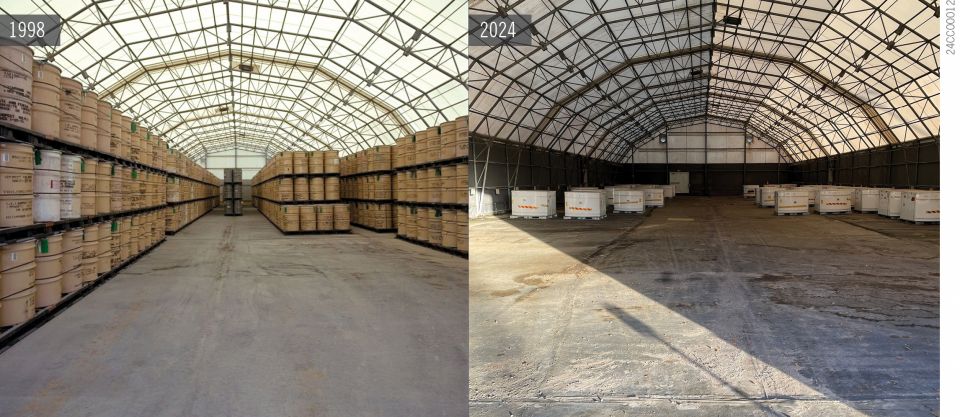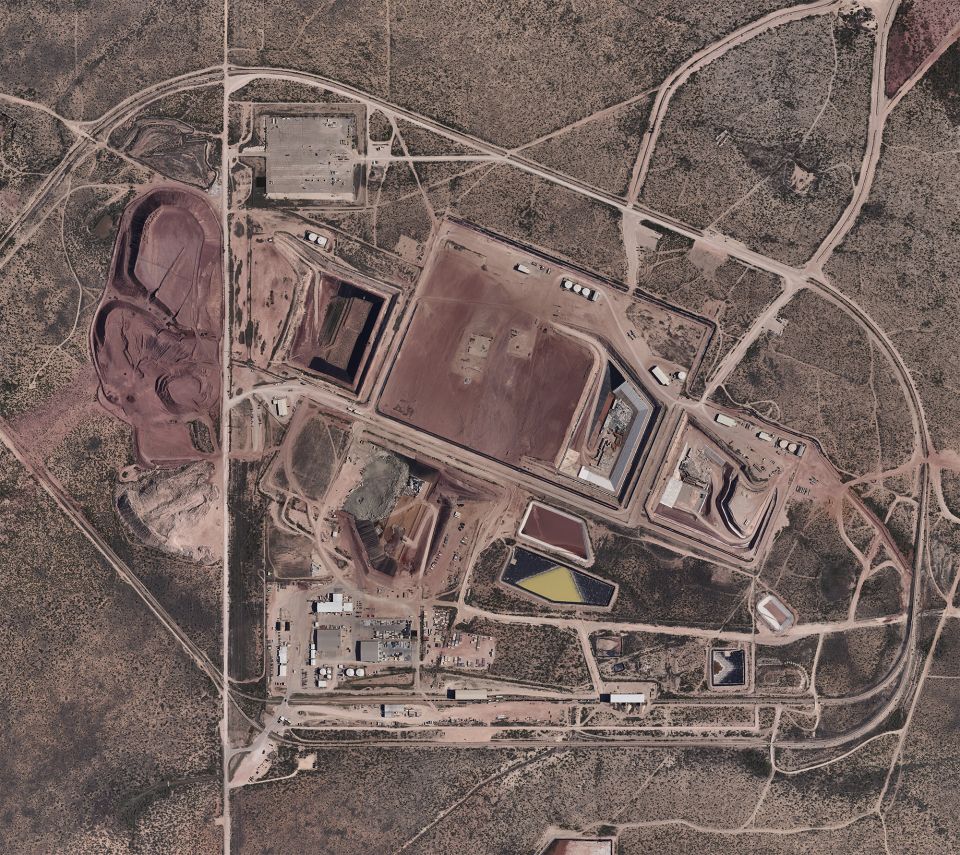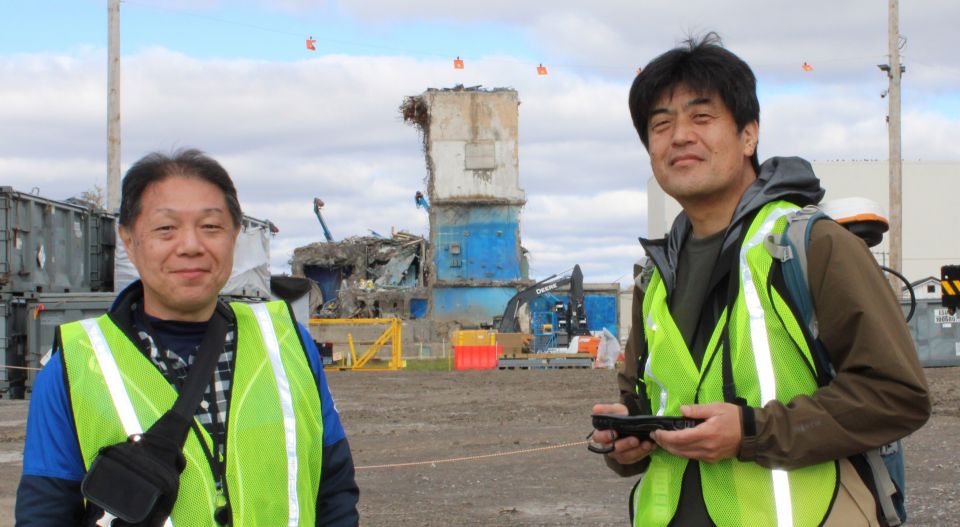Retention of the safety culture expert is one of several corrective actions implemented by HWSS, which is performing the work on the utility shaft. WIPP management and operating contactor Salado Isolation Mining Contractors (SIMCO) issued a formal stop work order to HWSS in November 2023 after a material handling basket fell 2,150 feet down the shaft after becoming misaligned and contacting steel framing at the hoist opening. According to the DNFSB, it was the third hoisting-related event at the utility shaft construction project in approximately one month.
SIMCO lifted the stop work order against HWSS on February 8 after the company implemented the corrective actions, which also included a comprehensive review of work procedures, the DNFSB reported on April 5.
Background: WIPP is constructing the new 26-foot-diameter utility shaft to provide air to WIPP’s new ventilation system, called the Safety Significant Confinement Ventilation System. The increased airflow provided by the system will allow for simultaneous mining, rock bolting, waste emplacement, and maintenance operations. The DOE announced in October 2023 that drilling crews had reached the shaft’s final depth of 2,275 feet.
Located about 26 miles east of Carlsbad, N.M., WIPP was constructed in the 1980s for disposal of defense-generated transuranic waste. The repository is carved out of a 2,000-foot-thick salt bed formed 250 million years ago. Waste is disposed of 2,150 feet underground in rooms mined from the salt bed.
Further incidents: On February 2, the DNFSB reported that approximately 900 feet of blast line that was no longer in use fell past a shaft work crew and coiled onto the steelwork below. The crew was performing inspection and recovery work in the shaft during a partial work release authorization from SIMCO in December. No injuries resulted from the incident.
The DNFSB also reported on March 1 that crews removed about 140,000 gallons of water that had accumulated in the shaft sump to a depth of 34 feet. The groundwater seeped into the shaft from a fractured rock layer located about 800 feet down the shaft. According to the DNFSB, crews were to repair the shaft’s concrete liner to stop the flow of water. Also, the shaft will be inspected for any structural damage caused by the water.
Infrastructure upgrades: The DOE’s Office of Environmental Management announced on April 23 that a large steel-framed bin, known as the “salt pocket,” will be overhauled at WIPP. According to DOE-EM, the salt pocket, which is used to stage mined salt before it is lifted to the surface via a salt hoist, is considered a “critical piece” of the repository’s underground infrastructure.
“The salt pocket is critical to our continued success as we safely dispose of the nation’s defense-related transuranic waste,” said EM Carlsbad Field Office manager Mark Bollinger. “Investing in this project will ensure we maintain our capability to efficiently stage mined salt until it’s ready to be removed from the underground repository.”
The work: SIMCO selected Cementation, a global mine contracting company with an office in Salt Lake City, Utah, to perform the work on the salt pocket. The project is expected to be finished this year.
The pocket, which extends approximately 55 feet below the depth of the salt hoist station, is supported by a steel framework that includes a measuring flask and gate for batching salt into an 8-ton skip to be hoisted. The skip, a vertical metal box with a bottom door dump, rides to the surface on guides, where it is dumped into 40-ton haul trucks and taken to WIPP’s salt stockpiles.
The work includes demolishing the existing loading pocket and structural steel, remining and supporting the ground, and constructing an entirely new loading pocket, inclusive of new skip guides at the mine level.
DOE-EM said the work is necessary to repair damage resulting from the lithostatic pressure of the salt mine, combined with more than 25 years of service.








